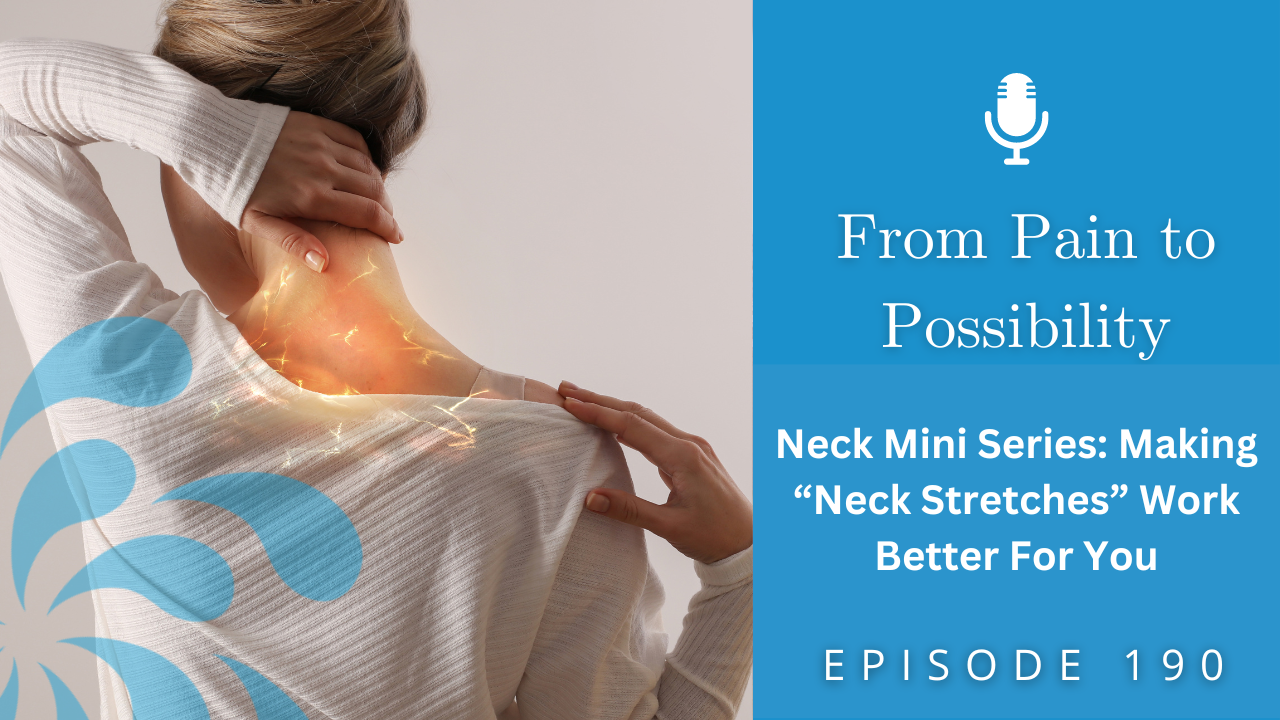Welcome to my mini series on the neck. This week, I guide you through some common neck stretches while teaching you methods for connecting to movement.
By looking closely at common stretches, we can observe what we feel and how our body reacts to the movements and sensations. Because this is an active episode, I suggest you find a chair to sit in as you tune in and follow along.
Discover the nuance that exists within your movement and some methods for identifying a pain-free range. Learn how to unpack common stretches to find movements with less compensation and more ease.
Subscribe: Apple Podcasts | Spotify

